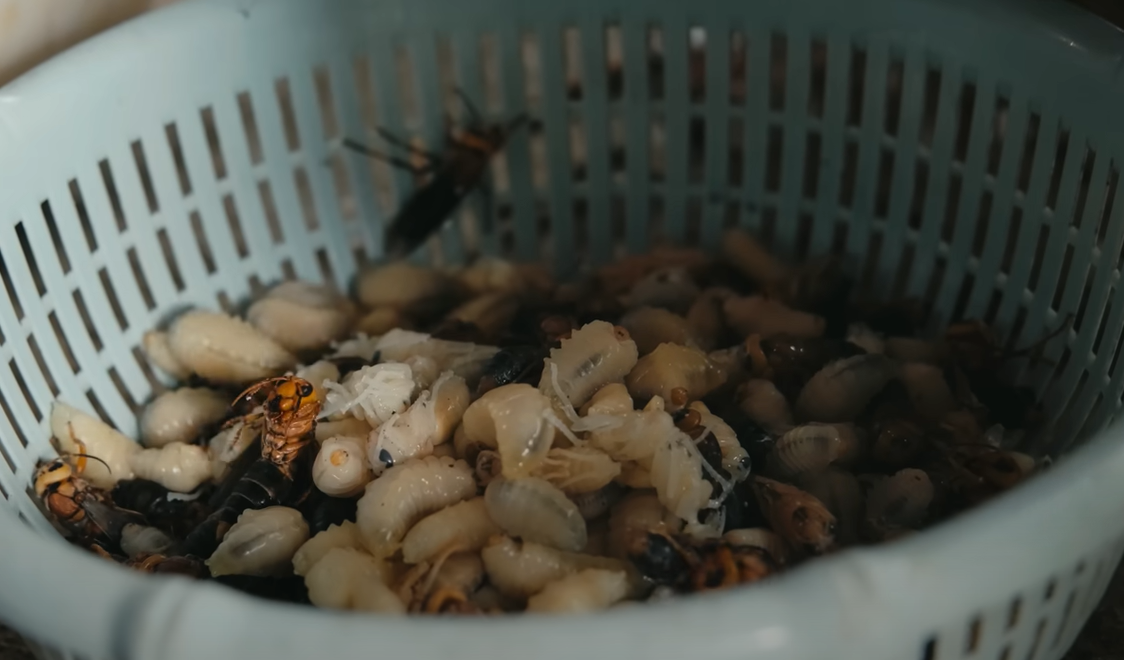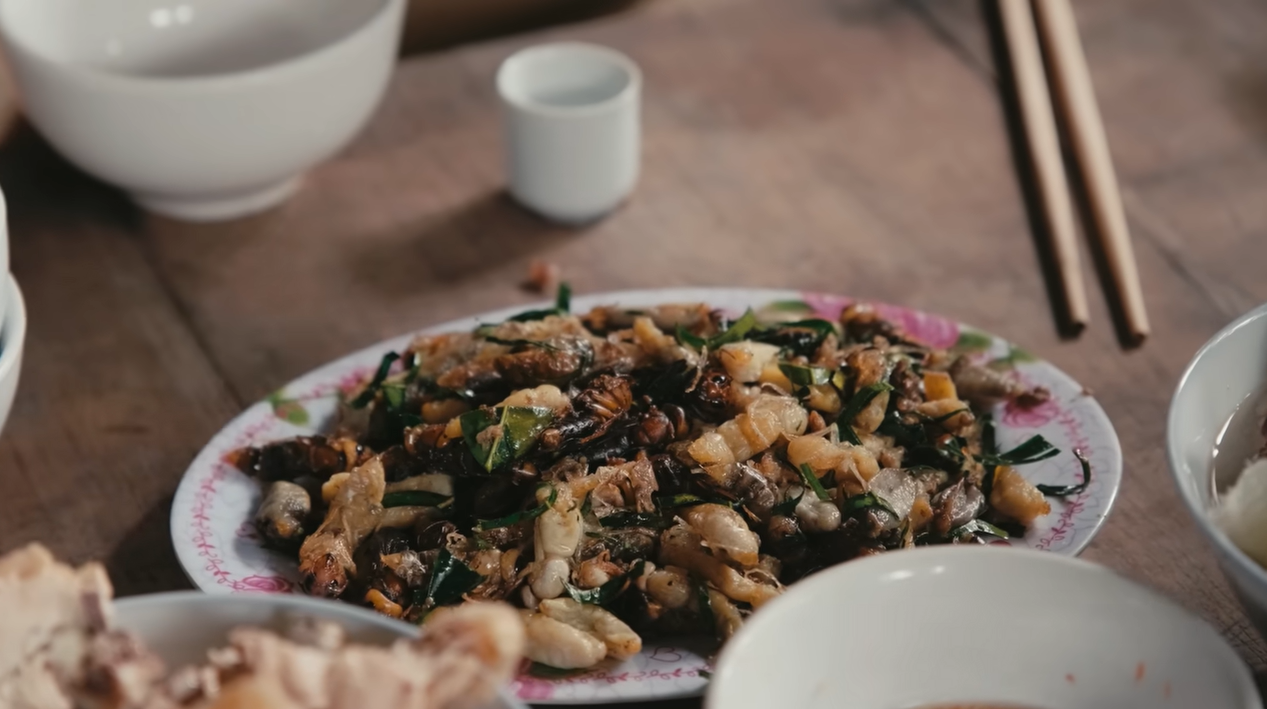
Andrew Fraser, an Australian content creator focusing on travel, currently lives and works in Vietnam. On his YouTube channel with over 230,000 followers, he regularly posts videos about culinary delights in various provinces from north to south.
He even tries the dishes which are unfamiliar to the majority of Vietnamese people, such as Nam pia (a traditional dish of Thai ethnic people, made from a thick paste in the small intestine of cows, including digestive juices and undigested food, adding seasonings and organs of herbivore), Sau tre (bamboo worms), and chau chau rang (roasted grasshoppers).
Recently, Andrew took a trip to Si Ma Cai district in Lao Cai province to learn about the local practice of raising hornets.
Hornets, also called ong dat (ground bees), typically nest in the hollows of old trees or underground, and are common in the mountainous regions of Northern provinces, especially in Northwest Vietnam.
In addition to exploitation from the wild, these bees are now farmed by locals in areas like Lao Cai and Son La.
This bee species is highly venomous but is hunted for food because the bees and their larvae can be processed into various protein-rich, nutritious dishes. They are sold for a high price, up to half a million Vietnamese dong per kilogram.
In Si Ma Cai, Andrew was invited by locals to their homes to experience a delicious dish made from hornets. When the host said the bee larvae can be sold for VND500,000 dong per kilogram, he noted that the price was as expensive as high-quality quality beef.
The larvae were harvested from a "giant" bee nest, weighing about 80-90 kilograms, which was raised and cared for by locals for over a year. These larvae are used to prepare various dishes, but the most delicious and popular is fried with lime leaves.
At a local man’s home, Andrew observed the preparation of the dish. After harvesting, the larvae are cleaned, then cooked in boiling oil until they turn brown golden, and seasoned to taste. Finally, local people sprinkle chopped lemon leaves on top.

The Australian YouTuber commented that the dish was visually appealing and smelled delicious. He was also impressed when seeing dishes made of different types of larvae, corresponding to various developmental stages of the bees, such as larvae, pupae, and mature bees.
Andrew Fraser said he would try each type, from the smallest to largest. He tried bee larvae first, saying that he had experienced it before, but in its raw form.
When eating fried larvae, he found it had a rich flavor, and was creamy, melting in the mouth, like ice cream.
The Western guest said that many people might initially be apprehensive at the sight of the larvae, but when they are cooked, it looks very appealing.
When trying the pupae (the next stage after larvae), Andrew admitted he was a bit scared. However, once again, he was surprised by the unusual, delicious taste.
"They taste somewhat like meat, easier to eat than I imagined. These pupae feel quite similar to chicken," he commented.
Continuing with the mature bees, Andrew said: "Honestly, this part is harder to eat than the larvae and pupae. It's crunchy, not soft, and somewhat tough because the bees have fully developed parts like legs, wings.”
If compared to the previous two stages, he fould it crunchier.
According to Nguyen Gia, a professional who harvests wild bee larvae in Lao Cai, bee larvae are most favored as they are considered a source of highly nutritious food.
Forest bee larvae can be soaked in alcohol to create a kind of medicine to treat bone and joint diseases. They can also be used to cook delicious dishes like porridge, stir-fries, and steamed sticky rice. With a high caloric content and rich in various vitamins, they are regarded as a "natural panacea," offering numerous health benefits.
Due to the dangers involved in harvesting bee larvae and and their limited availability, this food also tends to be quite expensive.
Though hornets are rare and precious which could be processed into delicious dishes, bee larvae can cause allergies or poisoning if they are not stored and prepared properly. Additionally, individuals prone to allergies should also be cautious and consider before enjoying dishes made from bee larvae.
Thao Trinh